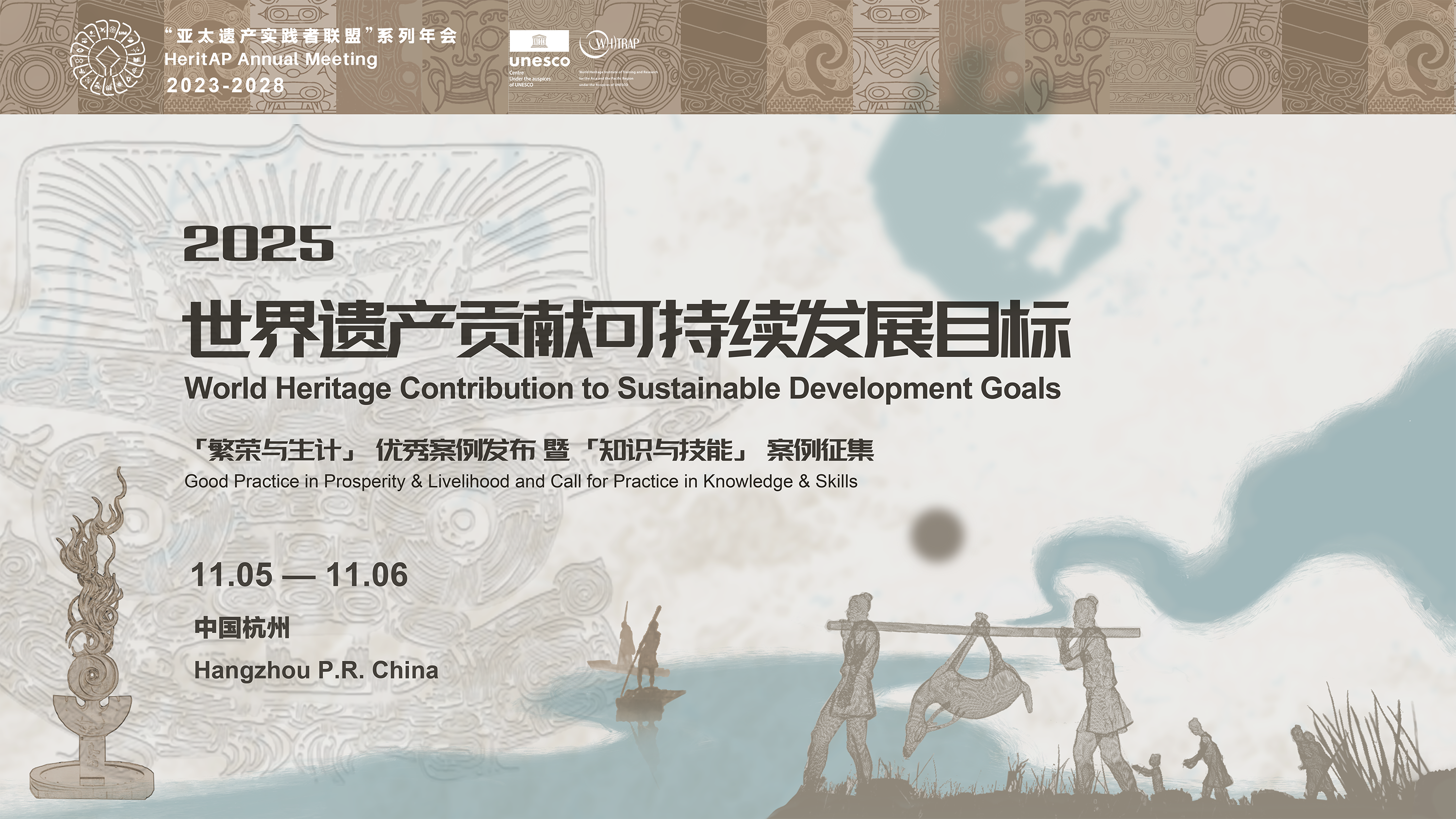
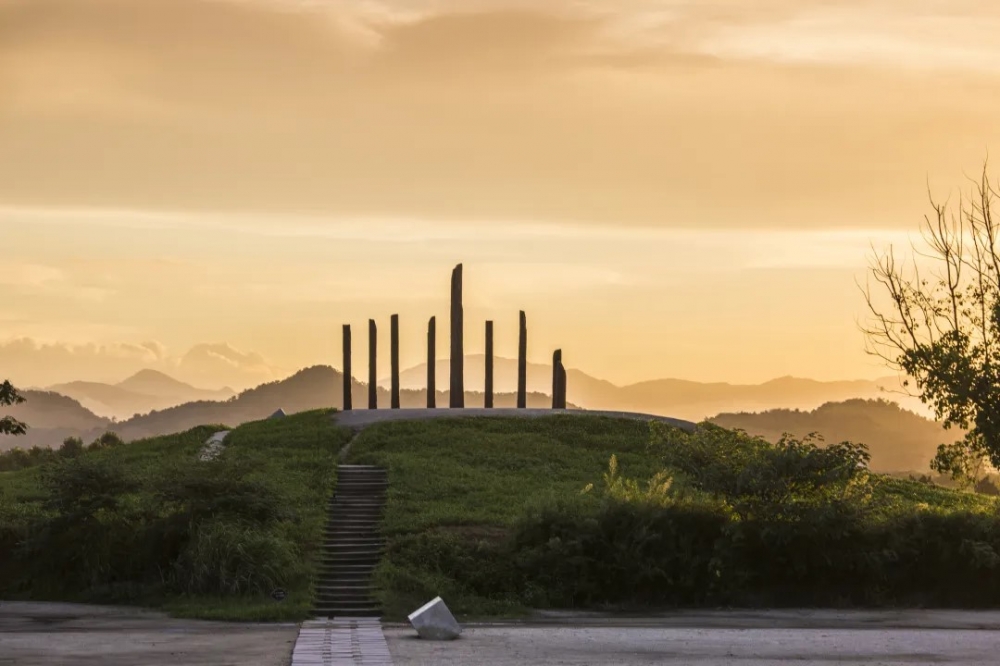
Liangzhu beauty shot
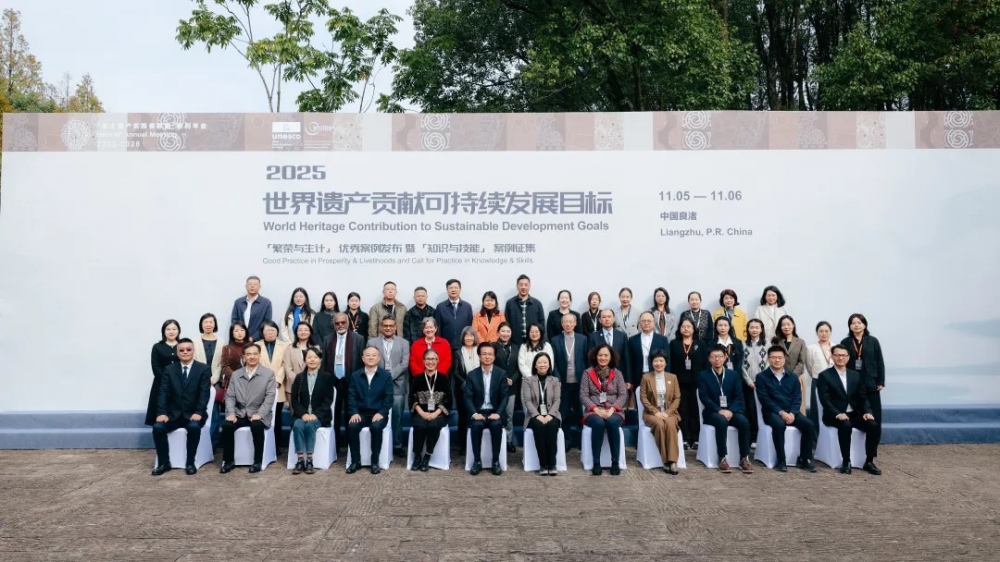
Group photo
Opening Ceremony
The meeting was organized by the World Heritage Institute of Training and Research for the Asia and the Pacific Region under the auspices of UNESCO (WHITR-AP), co-organized by WHITR-AP, Shanghai Centre, People’s Government of Yuhang District, Hangzhou, P.R. China and Hangzhou Liangzhu Archaeological Site Administrative District Management Committee, and supported by ICOMOS China. Partners for the meeting included the UNESCO Regional Office for East Asia, the International Centre on Space Technologies for Natural and Cultural Heritage under the auspices of UNESCO (HIST) and other UNESCO Category 2 Centres dealing with World Heritage and Intangible Cultural Heritage. Tongji University and Shanghai Tongji Urban Planning & Design Institute Co., Ltd provided professional support.The opening ceremony was moderated by Ms. LI Hong, Project Director of WHITR-AP Shanghai, with addresses delivered by representatives of organizers and co-organizers. Mr. Lazare ELOUNDOU ASSOMO, Director of the UNESCO World Heritage Centre, delivered an online address, recognizing the role of HeritAP in bridging heritage conservation and management with sustainable development. Ms. WANG Shu, Director of Hangzhou Liangzhu Archaeological Site Administrative District Management Committee, welcomed participants on behalf of the co-organizers, stressing the need to remember General Secretary Xi Jinping’s important instructions on Liangzhu Site conservation to shoulder the responsibility for conservation and to coordinate scientific protection, systematic research, intergenerational transmission and sustainable use of the site, to continue forging the path forward. Ms. SHAO Yong, Secretary General of WHITR-AP, thanked all parties supporting the annual meeting and the “World Heritage Contributing to SDGs” project. She reviewed the three-year progress, introduced the selected Good Practices from China, Egypt and Oman recognized under the “Prosperity & Livelihoods” theme, and stated that future work will further encourage synergies among stakeholders and focus on the need to advance heritage and sustainable development integration in Asia-Pacific.
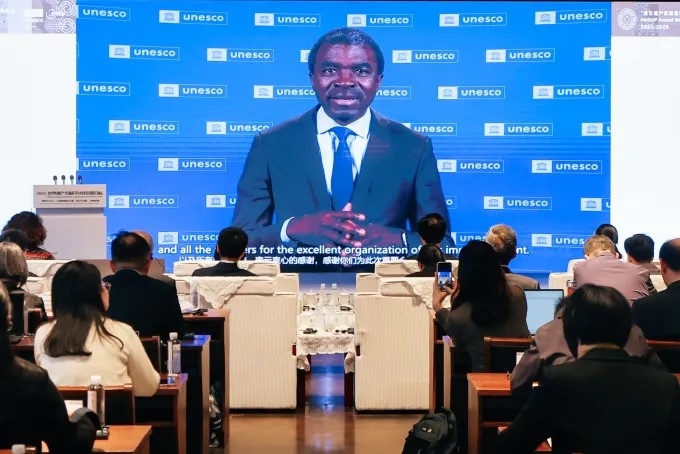
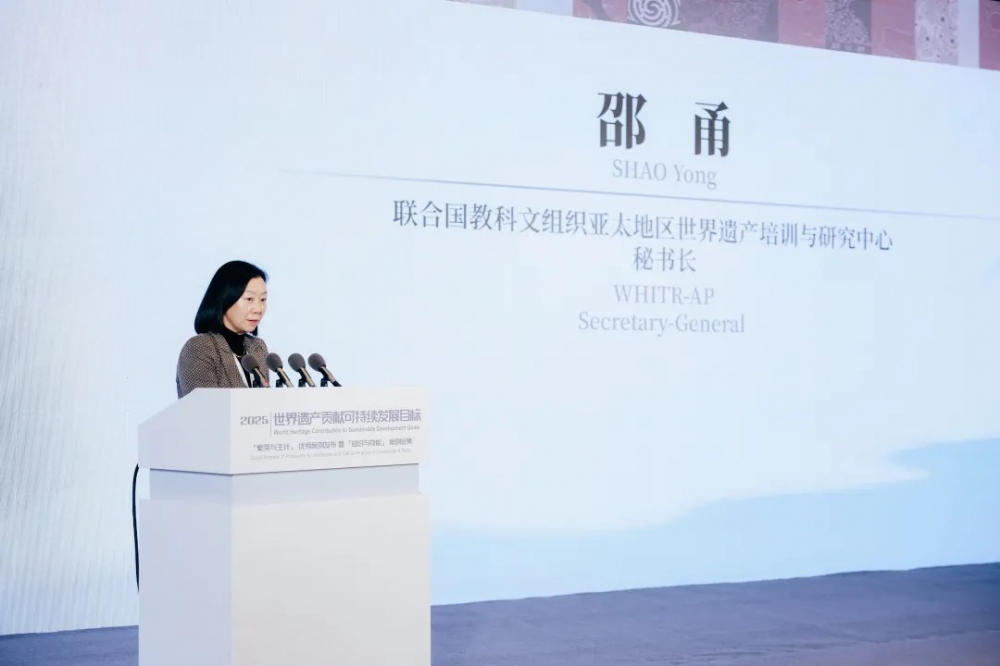
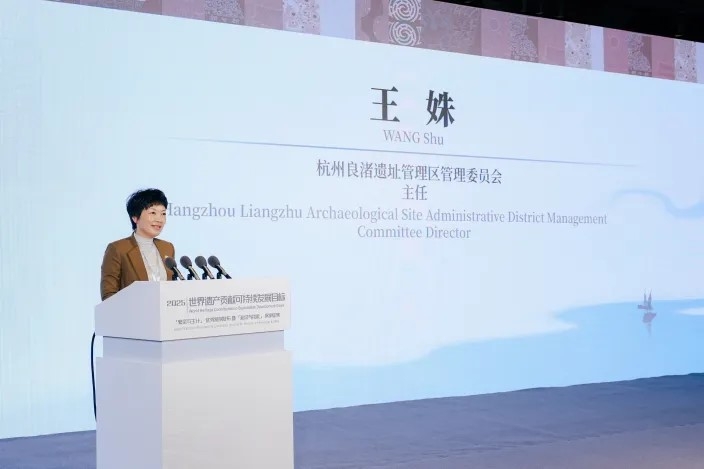
Highlight of the Opening—2025 “Prosperity & Livelihoods” Good practice cases revealed
After a rigorous process, the following six cases were selected among 42 submissions from 10 countries. They offer a range of practical models of heritage conservation that effectively harness the role of culture to contribute to prosperity and livelihoods across Asia and the Arab region:
- China: “The Liangzhu Cultural Corridor: Exploring Pathways to Integrate Heritage Conservation and Regional Sustainable Development”
- Egypt: “Revitalisation of Historic Esna Project”
- China: “Libo Model of Comprehensive Regional Prosperity driven by Innovative ‘Tourism+’ Based on World-Heritage Stewardship”
- China: “The Conservation Practice and Sustainable Development of Tongli Ancient Town”
- Oman: “Bahla Fort's Role: Balancing Economic Development, Heritage Protection, and promoting a sustainable livelihood Model”
- China: “The Prosperity and Livelihood of Azheke Village: A Case Study on the Protection, Development and Inheritance of the Honghe Hani Rice Terraces World Cultural Heritage”
Keynote speeches focus on practice
After the opening ceremony, the keynote session on “From Policy to Practice” was moderated by Mr. Gamini WIJESURIYA, Special Advisor of WHITR-AP Shanghai.
-Ms. ZHAO Yun, Director of World Cultural Heritage Centre of China, Chinese Academy of Cultural Heritage, used the Grand Canal as a living example to elaborate on China’s practice of blending and balancing multiple values in linear cultural heritage conservation under the World Heritage-for-SDGs concept.
-Ms. Naima Benkari, ICOMOS Focal Point for SDGs Working Group, provided a video presentation where she noted the contribution of ICOMOS SDGWG research to the HeritAP project and discussed the working group’s core achievements in embedding cultural targets and highlighting community’s voices, through cases on heritage tourism, gender equality & heritage integration.
-Ms. SHAO Yong, Director of WHITR-AP Shanghai, introduced China’s theoretical construction and practical exploration of integrated cultural heritage conservation & regional development.
-Mr. WANG Pengbin, Nature-Based Solutions Advisor of the IUCN Nature-Based Solution Management Hub, introduced IUCN work on developing the NbS framework, include the release of principles and standards for both global and Chinese practices, demonstrating comprehensive benefits and discussing the potential of using the NbS framework for natural & cultural heritage management
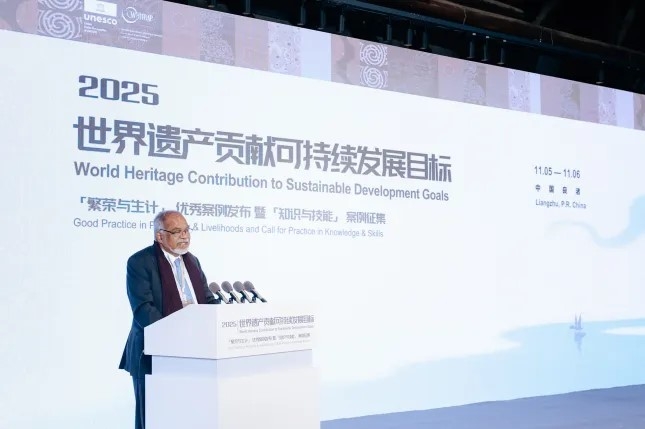


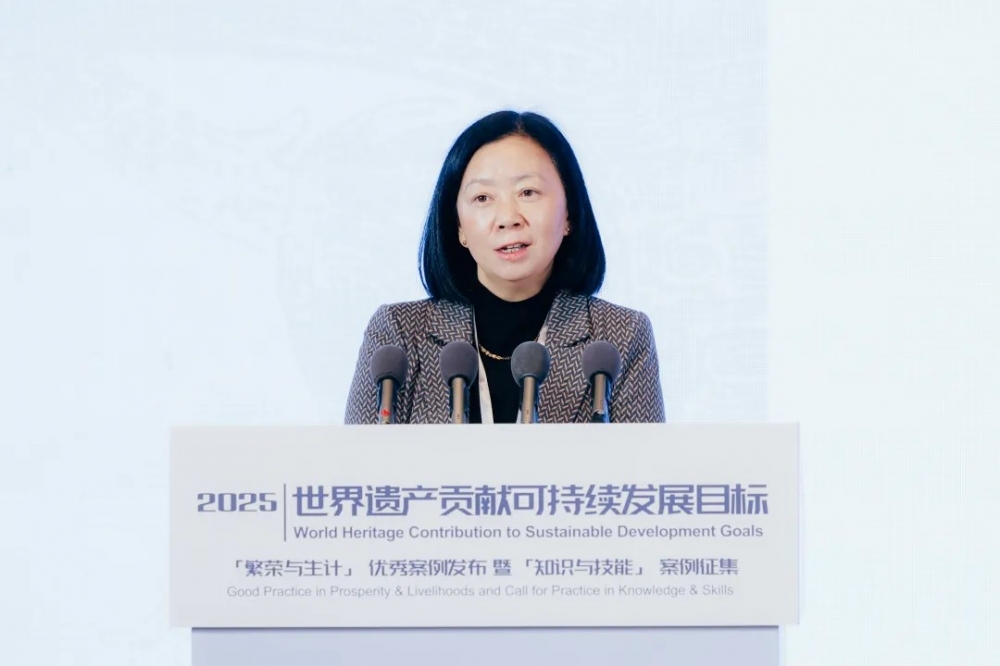
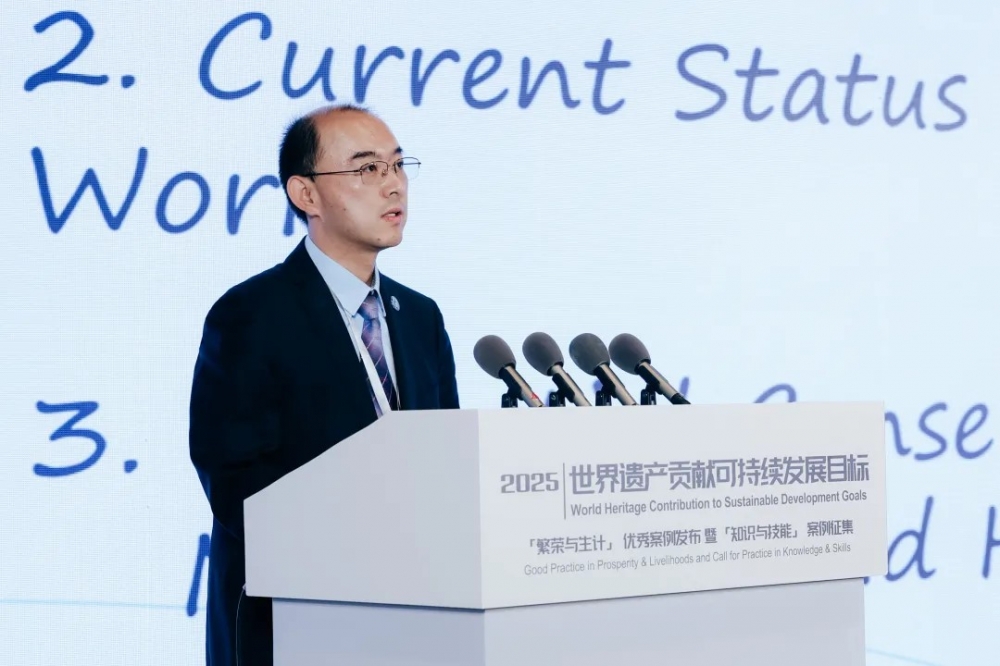
The second keynote block, moderated by Prof. Nobuko INABA, Director of Mt. Fuji World Heritage Centre, included the following presentations:
- Mr. Rohit JIGYASU, Project Manager at ICCROM, discussed how heritage management has shifted to holistic, people-centred approaches that enhance connections between World Heritage management plans and SDGs. He stressed the need for continued cross-sectoral collaboration and to regard planning as continuous process for safeguarding values, driving sustainable development and building resilience.
- Mr. YAN Haiming, Director of the Secretariat of ICOMOS China, presented approaches for harmonizing heritage and people, borrowing from Fei Xiaotong’s “cultural self-consciousness” to rethink the culture and sustainable development. He proposed that conservation should focus on social operating patterns and cultural-identity construction amid life’s complexities.
- Ms. Haeree SHIM, Head of Education and Networking, WHIPIC, showcased WHIPIC’s new definition, principles and implementation guide for heritage interpretation and its practical implementation in Zimbabwe and Saudi Arabia, highlighting fair and equitable distribution of tourism revenues.
- Ms. Huong PHAM, Chief of Culture Unit & Culture Specialist from the UNESCO Field Office in Hanoi, analysed public and private partnership models in Hoi An Ancient Town and Ha Long Bay, demonstrating their importance for providing local benefits, enhancing social inclusion and contributing to UNESCO’s policies.

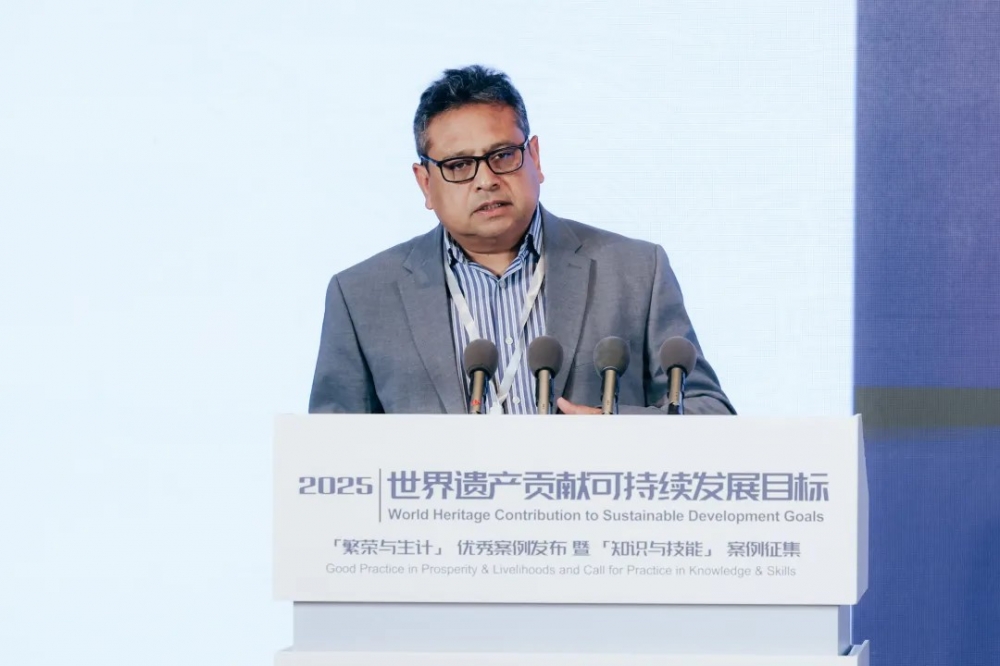


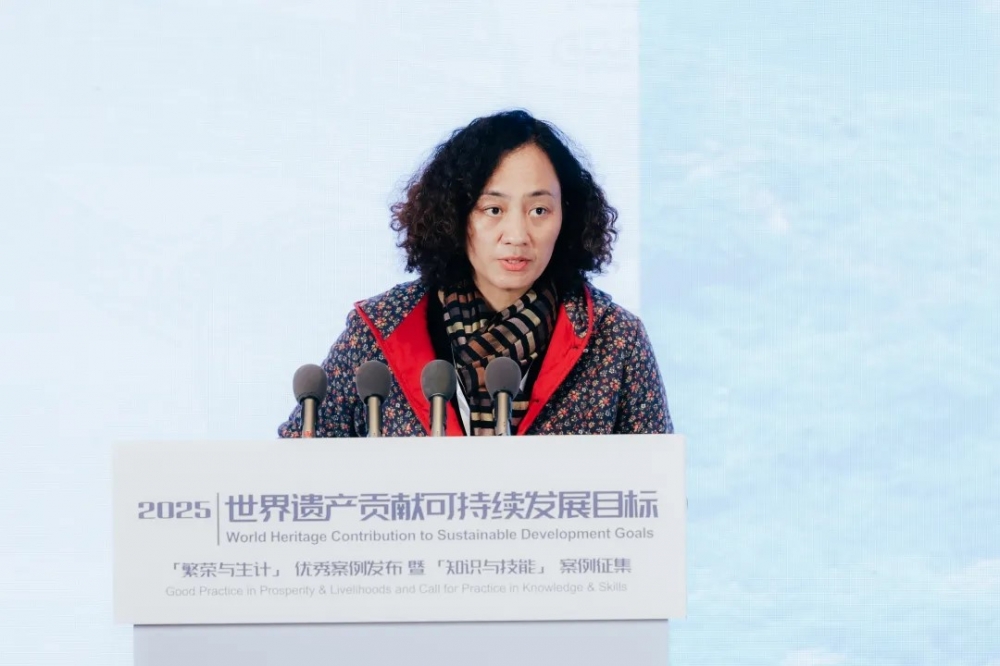
Good Practices in “Prosperity & Livelihoods” Practices Heritage Contribution to Sustainable Development Goals
In the afternoon, the six good practices selected in 2025 for the dimension of Prosperity and Livelihoods were discussed in two sessions. These cases demonstrated how the conservation and management of World Heritage properties can fuel economic prosperity, improve the well-being of communities and effectively contribute to regional sustainable development.
During the first session, moderated by Prof. WANG Xinyuan, Deputy Director of HIST, the following cases were presented:
- Mr. YE Weijun, Deputy Director of Hangzhou Liangzhu Archaeological Site Administrative District Management Committee, examined the project of “The Liangzhu Cultural Corridor”, which uses the concepts of “spatial compensation + institutional equity” to build a multi-stakeholder governance framework, extend culture-led industries beyond the boundaries of the World Heritage property, for increased job creation, collective income and diversified industries.
- Mr. Kareem IBRAHIM, CEO of Takween Integrated Community Development Co., Egypt, discussed in his video presentation the range of initiatives implemented for Esna’s revitalization, including the restoration of historic buildings, the activation of craft making and other industries that overall boosted the average household income by 30%.
- Prof. XIAO Shizhen, from the Guizhou Normal University, presented the “Libo Model”, which integrates the conservation and management of natural, tangible and intangible heritage, and promotes multi-ethnic cultural inclusion in eco-cultural tourism, creative industries and cross-level governance. The model can demonstrate how sustained investment has reversed decades of extreme poverty and transformed Libo into a thriving green heritage economy.


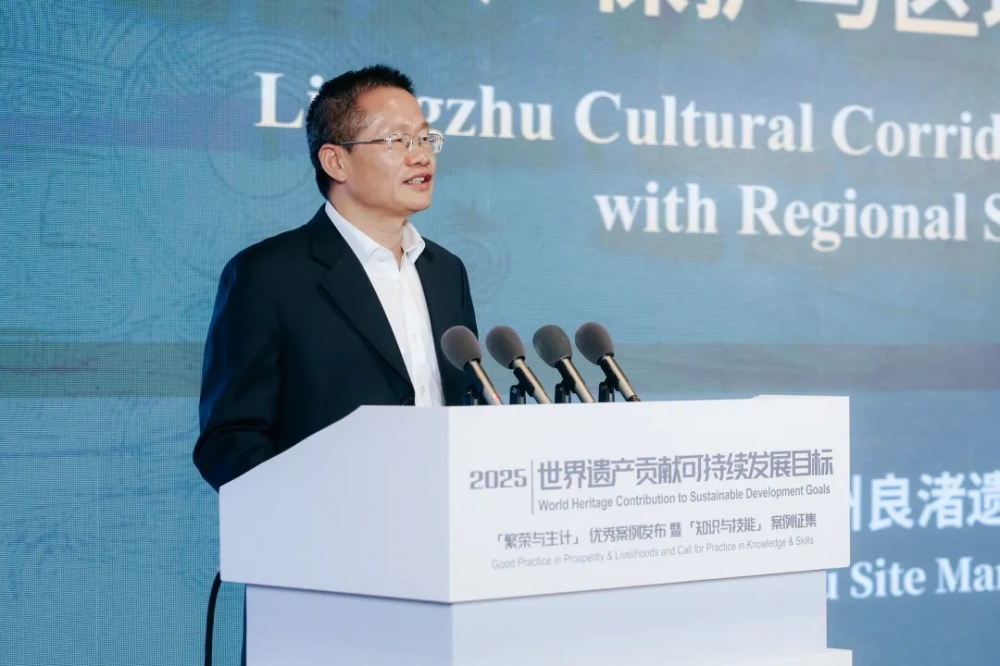
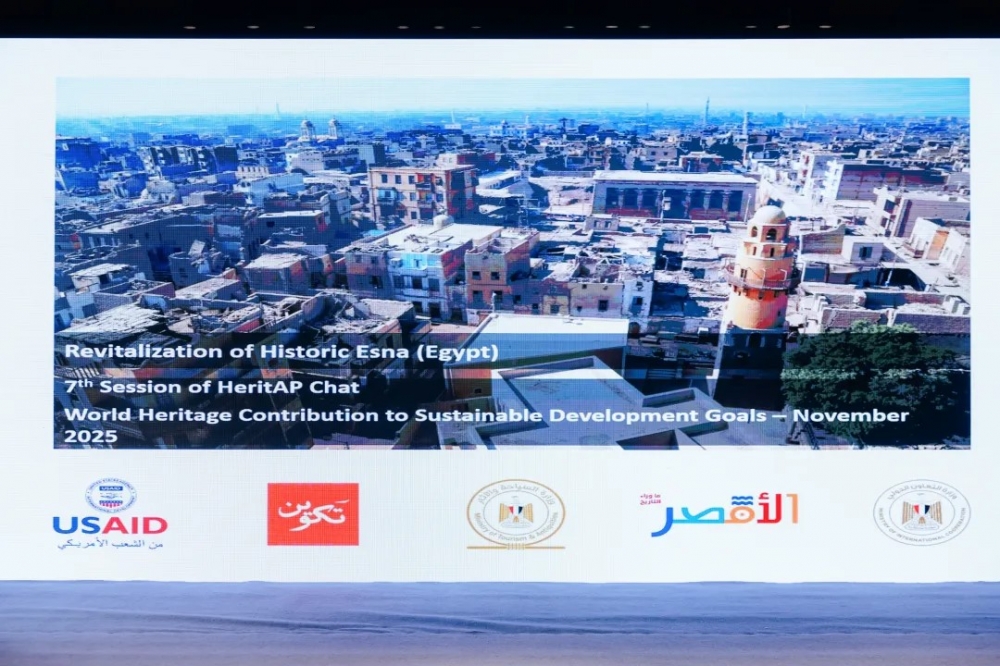
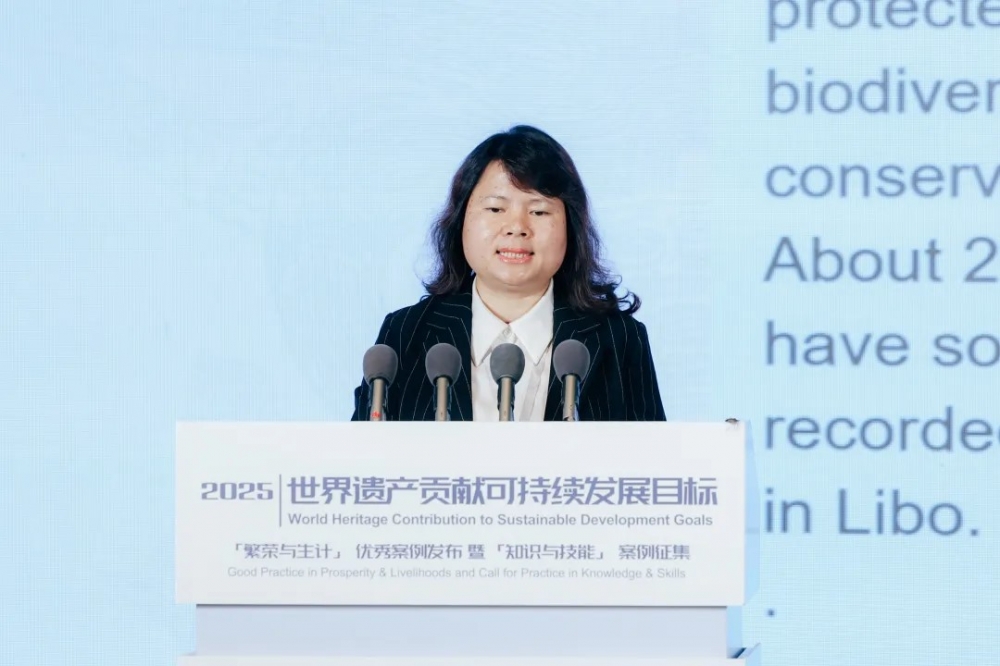
Session 2, moderated by Dr. Hatthaya SIRIPHATTHANAKUN, Director, SEAMEO SPAFA, included the following cases:
- Mr. SHEN Chunxi, Director of Construction Management Office of Tongli Town, Wujiang District, Suzhou, China explained Tongli’s synergy between rivers and lakes, continuous traditions such as morning-bell-evening-drum, heritage conservation and ecological maintenance, which collectively deliver tourism revenues, economic vitality and ecological resilience.
- Ms. Manal Mubarak AL-SHEREIQI, Deputy Manager of Bahla Fort Site Department, Directorate General of Antiquities, Ministry of Heritage & Tourism, Oman, described Bahla Fort’s integration of conservation, craft revival, cultural tourism and creative industries, that empower women and youth and the reinvestment of revenues from tourism in infrastructure, education and heritage preservation
- Mr. WU Yuefu, Secretary of Party Committee of the Administration of World Heritage of Honghe Hani Rice Terraces, presented the Azheke Plan, a community-led 7 to 3 revenue sharing model (70% to villagers, 30% reinvested) that safeguards traditional architecture, terraces and cultural practices while revitalizing the economy, attracting people to return to the area and protecting the ecology.
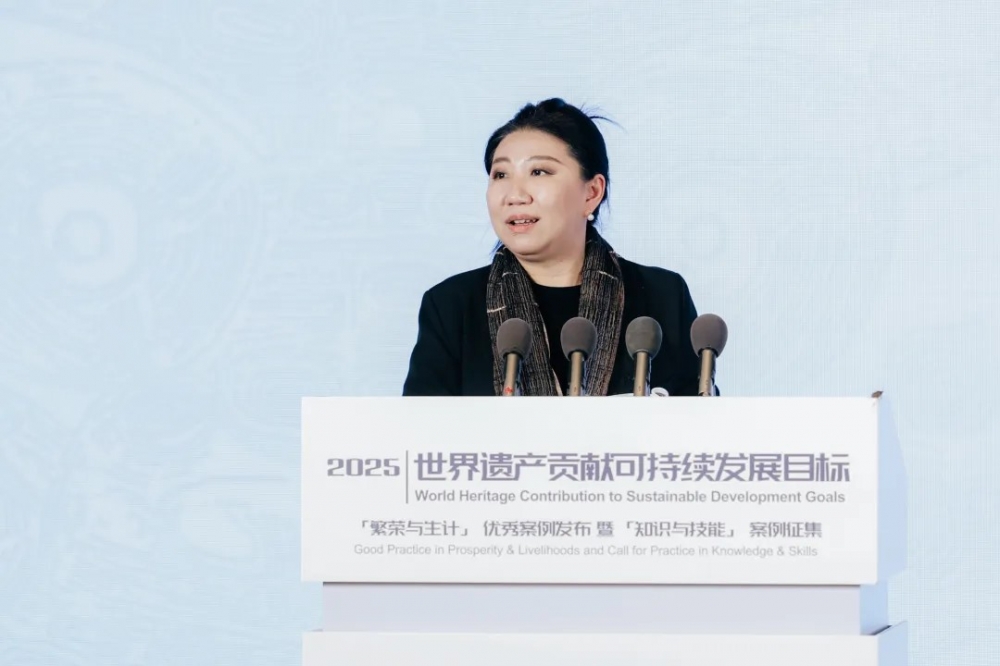
Dr. Hatthaya SIRIPHATTHANAKUN, Director, SEAMEO SPAFA
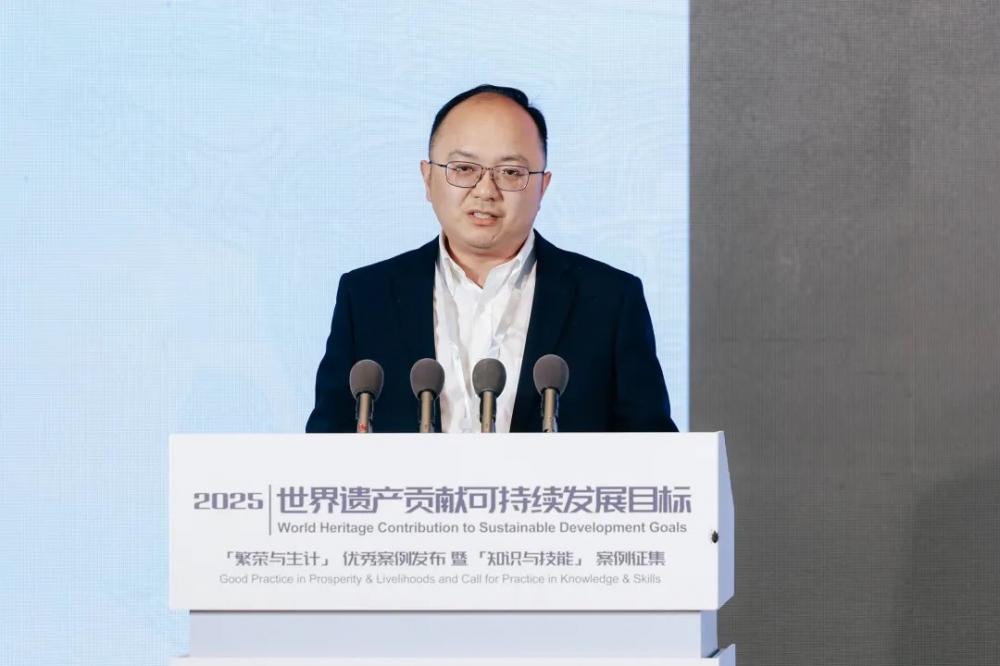
Mr. SHEN Chunxi, Director of Construction Management Office of Tongli Town, Wujiang District, Suzhou, China

Ms. Manal Mubarak AL-SHEREIQI, Deputy Manager of Bahla Fort Site Department, Directorate General of Antiquities, Ministry of Heritage & Tourism, Oman
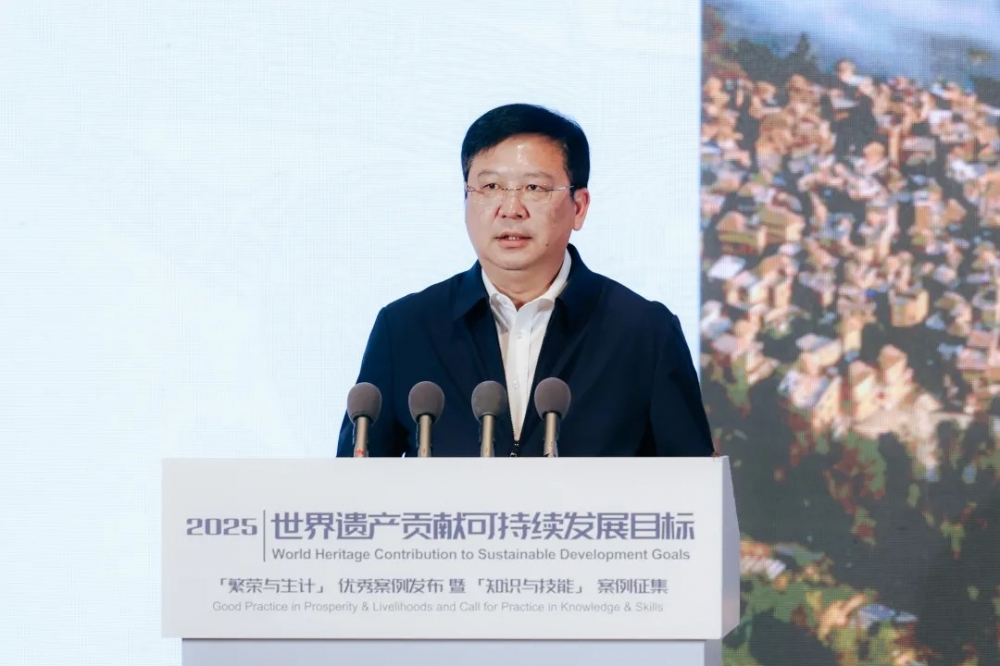
Synergies between Tangible & Intangible Heritage and launch of the call for the 2026 Good Practice cases on “Knowledge and Skills”
The session had the participation of UNESCO’s East Asia office and UNESCO Category 2 Centres in both tangible and intangible heritage domains, creating a platform for cross theme collaboration and exchange.
Ms. Duong Bich HANH, Chief of Culture Unit in the UNESCO Regional Office for East Asia, called for a holistic approach that bridges the artificial divide between tangible and intangible heritage, viewing heritage as living systems that sustain communities, and outlining policy, institutional and conceptual challenges to attain this integration.
-Dr. Gamini WIJESURIYA traced the development of the 1972 World Heritage Convention and the 2003 Convention for the Safeguarding of Intangible Cultural Heritage and provided a potential convergence framework that considers four pillars that are rooted in the “Naples spirit” and people centred approaches.
-Ms. NOJIMA Yoko, Head of the Research Section, IRCI, examined the role of ICH in shaping heritage landscapes and human-land interaction, and the synergies with tangible heritage, plus challenges and opportunities for holistic safeguarding under the backdrop of sustainable development.
-Ms. Boyoung CHA, Director of Office of Cooperation and Networking, ICHCAP, shared Asia-Pacific cases where historic sites are enhanced by traditional performing arts and crafts, thereby boosting visitor engagement and community belonging.
-Ms. LI Guanghan, Executive Director of WHITR-AP Beijing, used Gansu Province to show how the synergy of tangible and intangible resources can diversify urban cultural expressions and fuel creative economies.
-Ms. JIANG Yeqin, Director of International Communication Unit, WHITR-AP Suzhou, outlined Suzhou classical gardens’ dual-layer conservation and innovative activation strategies that sustain traditional crafts and high-quality urban development.

Ms. LI Hong, Project Director of WHITR-AP Shanghai, moderates and presents a thematic introduction
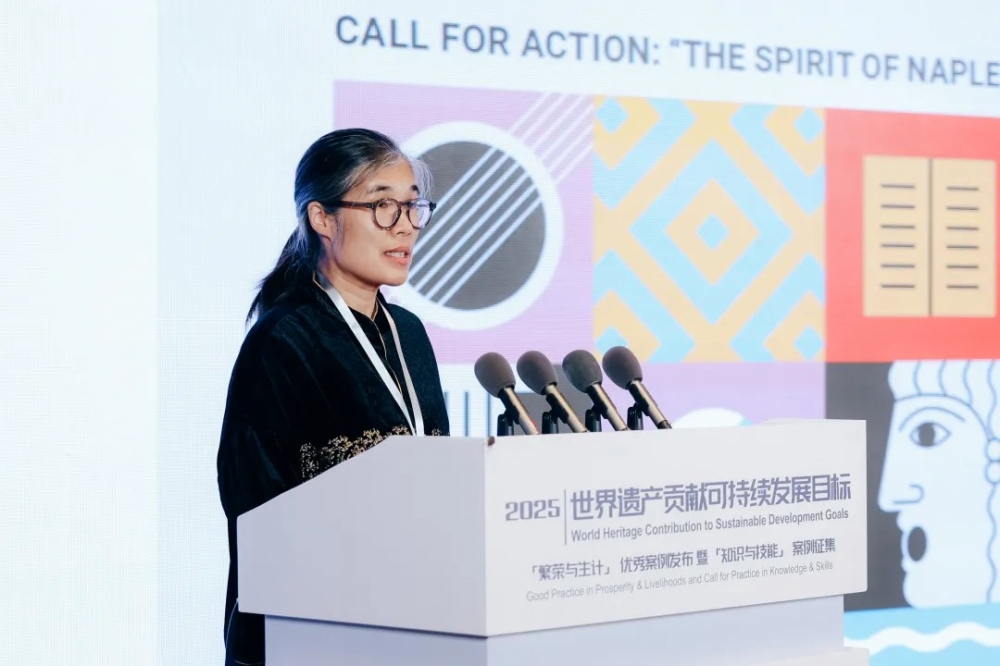

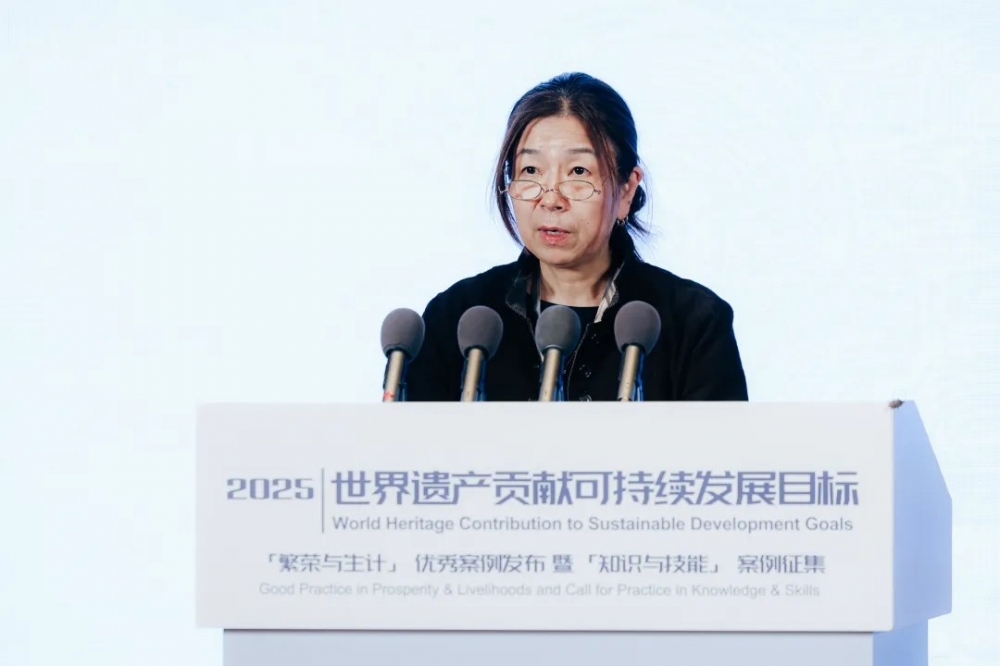
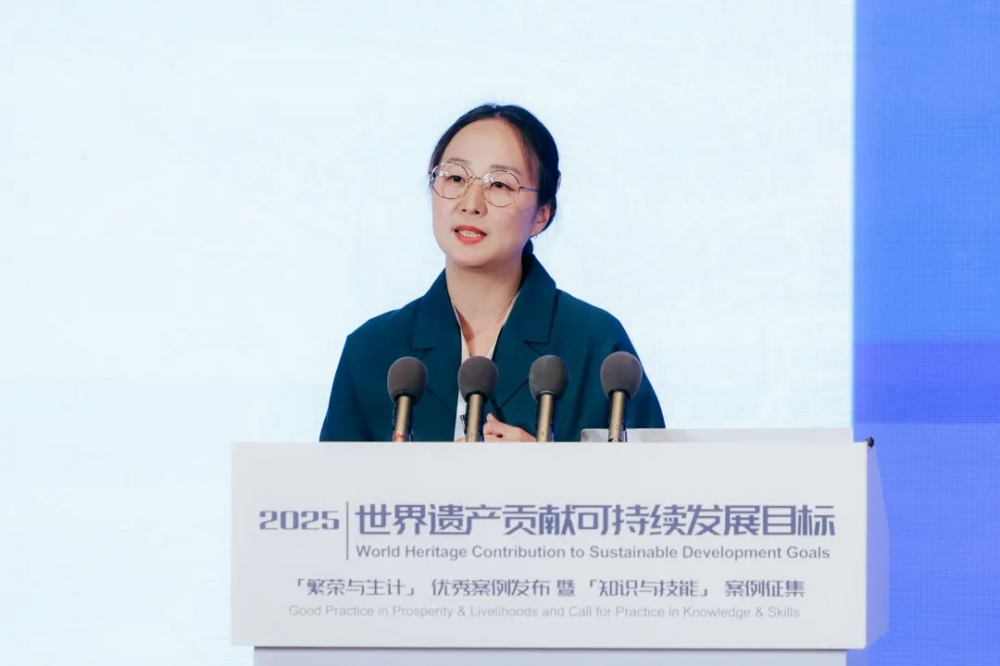
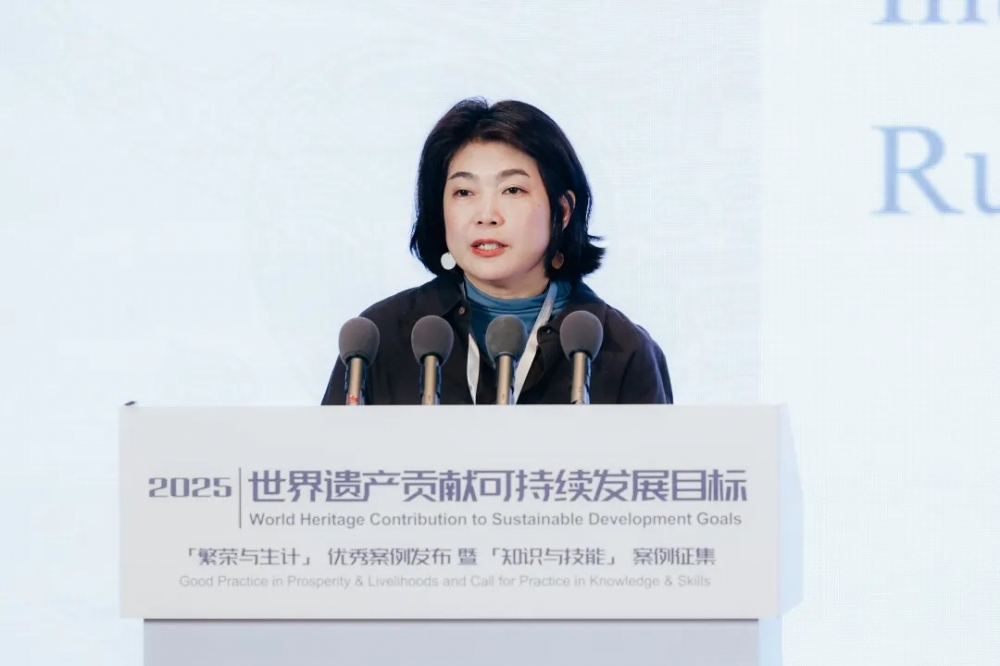
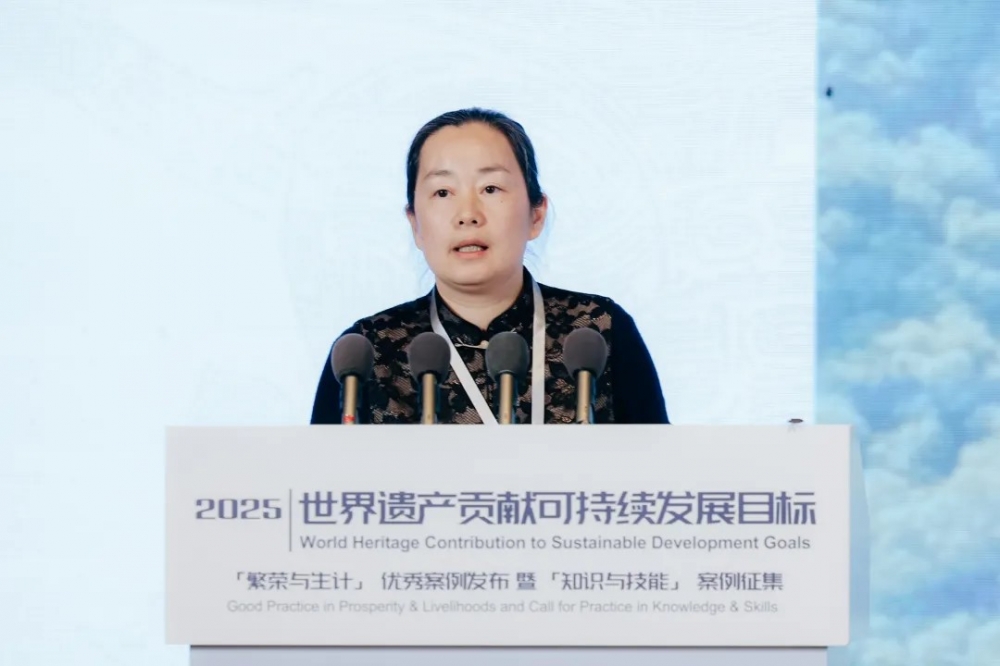
Finally, Ms. Carolina CASTELLANOS (LONG Miao), Head of Research Unit of WHITR-AP Shanghai, summarized the meeting and discussed some points on the way forward. She underscored how presentations demonstrated that heritage conservation, when combined with inclusive governance and active community participation, serves as a powerful driver of prosperity, social cohesion, and sustainable development. Key themes from speakers included integrating tangible and intangible heritage, building cross-sector partnerships, and empowering local communities through context-sensitive and innovative approaches. Different examples showcased how heritage-driven initiatives can generate livelihoods and foster resilience, demonstrating the importance of knowledge-sharing and collaborative policy development for addressing evolving challenges in heritage management.
Looking forward, heritage conservation needs to be recognized as a collective responsibility and that practices should be rooted in the Sustainable Development Goals’ pillars: environment, culture, governance, society, and economy. There is a need for policymakers to embed heritage in core development strategies, for practitioners to adopt community-based models, and for all stakeholders to commit to equity, education, and innovation in their practices. By fostering dialogue, promoting education, and developing effective metrics, global communities can safeguard heritage as a living force that supports a sustainable and equitable future for all.

The two-day meeting included a technical field trip to the Liangzhu World Heritage property on 6 November. The route specially links core sections of the Liangzhu Cultural Corridor and community co-building sites, to allow participants to assess how Liangzhu has streamlined heritage conservation into economic generation, improved human well-being and contributor to SDGs.
